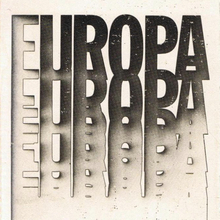La Metamorfosis by Franz Kafka (Alianza Editorial)
Contributed by Florian Hardwig on Oct 24th, 2022. Artwork published in
circa 1972
.
Topics▼ |
Formats▼ |
Typefaces▼ |
3 Comments on “La Metamorfosis by Franz Kafka (Alianza Editorial)”
Lorraine Li and Jonathan Maghen’s open-source Robert Brownjohn font (published by Primary Foundry in 2021) has a similar trope to Gil’s cover but apparently in a different take using a serif and an even bolder sans serif (both of the faces widths are condensed).
Comparison (Note that the correct spelling is “Robert”)
It says that this font was based on a concert poster (hence, as said “cover art” on the foundry’s website) for Grishman-Ryce Duo by Robert Brownjohn in 1959.
Any thoughts?
Jay, sorry, I missed your comment in October.
Yes, that’s a great reference! There are a number of such “Frankenstein” typefaces. Centralschrift from 1853 combines a fraktur for the lower half and a neo-classical roman for the upper half of the letters. Fraktendon (2002) is a more recent example.
I wonder what typefaces Brownjohn combined (BTW, the official Robert Brownjohn website says it was a concert flyer, made in the 1950s). The sans isn’t Franklin Gothic. It might be Modern Gothic Condensed, but I haven’t made a comparison. The serif is something like Condensed No. 3 or Torino Condensed.
Li and Maghen don’t comment on their sources, which I find a bit sad, especially for an open-source typeface. The sans used for the lower half (and all of the lowercase) is ITC Franklin Condensed Black, distinguished from the original ATF design by the angled terminal in S, among other things. The serif seems to be OPTI Roman Compressed, some early-1990s abandonware, complete with its misaligned tops of E and T. It comes very close to the originally used serif, though.
See also Gil’s cover design for Europa: el surgimiento de una nación from 1973: